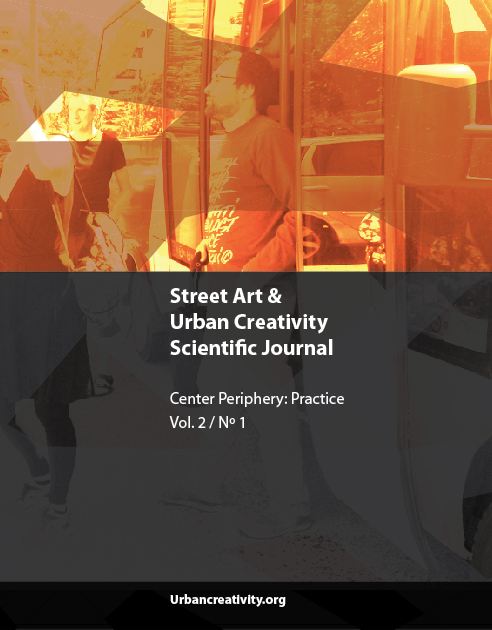Keith Haring - a Street Artist?
DOI:
https://doi.org/10.25765/sauc.v2i1.39Keywords:
New York, Basquiat, Keith Haring, Street Art, Urban Art, Public Art, Graffiti, Working Definition, Overview, Summary, Terms, John Fekner, SamoAbstract
Since about 2000 Street Art is an art movement. Before that only a handful of artists did what we call Street Art in 2016. One of them was Keith Haring. But to what extent is Keith Haring in retrospect a Street Artist? Using the example of Haring’s subway chalk drawings (ca. 1980-85) and one of his public murals, called “Crack is Wack” (1986), I discuss concepts such as Street Art, Graffiti and Public Art. Some of Keith Haring’s works are Street Art because he carried them out in a performative way, without permission, in public spaces. They might be called Street Art because those works explicitly refer to this public space, they were indeed often tailor-made for their location, and because as a result of their illegality and their union with each location they were ephemeral, not conceived in time permanently. “Crack is Wack,” however, became a public art mural. It changed its status from an illegal, Graffiti-inspired, self-authorized work of Street Art to long lasting Public Art.
Downloads
Global Statistics ℹ️
|
241
Views
|
141
Downloads
|
|
382
Total
|
|
Downloads
Published
How to Cite
Issue
Section
License
Copyright (c) 2016 Street Art & Urban Creativity

This work is licensed under a Creative Commons Attribution-NoDerivatives 4.0 International License.
Those authors who publish in this journal accept the following terms:
-
Authors retain copyright.
-
Authors transfer to the journal the right of first publication. The journal also owns the publishing rights.
-
All published contents are governed by an Attribution-NoDerivatives 4.0 International License.
Access the informative version and legal text of the license. By virtue of this, third parties are allowed to use what is published as long as they mention the authorship of the work and the first publication in this journal. If you transform the material, you may not distribute the modified work. -
Authors may make other independent and additional contractual arrangements for non-exclusive distribution of the version of the article published in this journal (e.g., inclusion in an institutional repository or publication in a book) as long as they clearly indicate that the work was first published in this journal.
- Authors are allowed and recommended to publish their work on the Internet (for example on institutional and personal websites), following the publication of, and referencing the journal, as this could lead to constructive exchanges and a more extensive and quick circulation of published works (see The Effect of Open Access).













